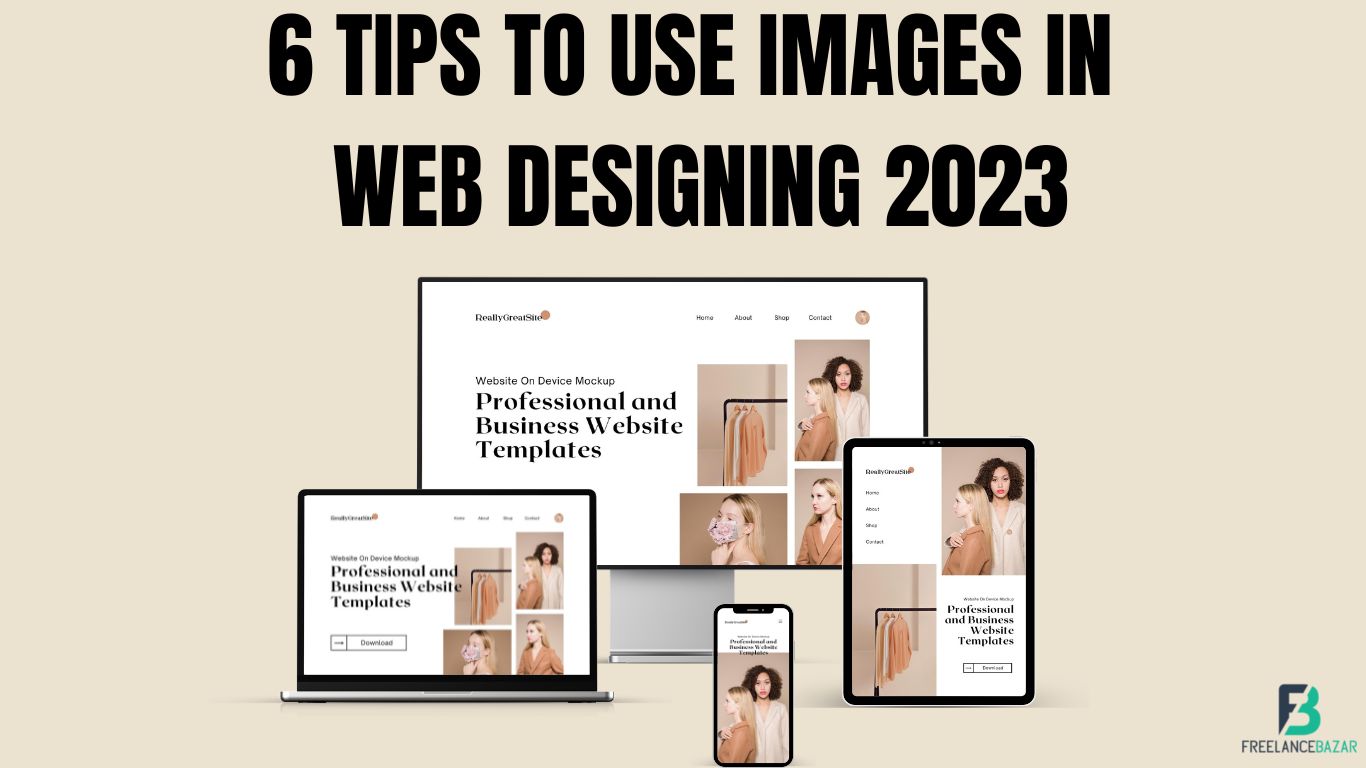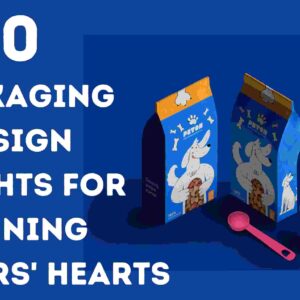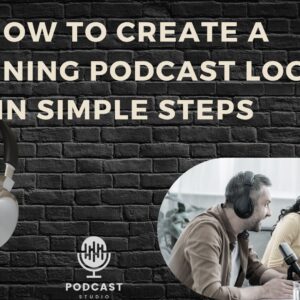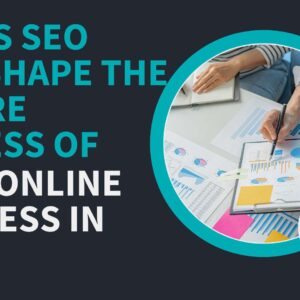Images have traditionally been a staple of web design, but designers are increasingly experimenting with new visual elements to create more engaging and dynamic web pages.
Animations, for example, can be used to add movement and interactivity to a design, making it more visually interesting and engaging for users. These animations can include anything from subtle hover effects to full-blown animated sequences that respond to user input.
Illustrations can also be used to create a unique visual style and add a human touch to a design. They can be used to convey complex ideas or emotions, or simply to create a playful and whimsical aesthetic.
Oversized typography is another trend that has gained popularity in recent years. Using large, bold text can make a statement and grab users' attention, and can be particularly effective when combined with a minimalist design aesthetic.
Other visual elements that designers are experimenting with include 3D graphics, interactive video, and even virtual and augmented reality experiences. These elements can create immersive and engaging experiences for users, blurring the lines between the digital and physical worlds.
Overall, the use of images in web design is evolving, and designers are exploring new ways to create engaging and dynamic web pages that go beyond the traditional use of static images. By incorporating animations, illustrations, typography, and other visual elements, designers can create unique and impactful designs that capture users' attention and create a memorable user experience.
The keys to successful web design are images with rich content and sharp utility.
1. It is best to use images only when necessary.
Using images on a website can be a powerful way to engage users and communicate information, but it's important to use them judiciously and only when necessary. Here are some reasons why:
- Page loading speed: Large, high-resolution images can slow down page loading times, which can lead to a poor user experience. This can also negatively impact search engine optimization (SEO) since page loading speed is a key factor in search rankings.
- User experience: Users may become frustrated if images take too long to load or if they are not relevant to the content on the page. Images should be used to enhance the user experience, not detract from it.
- Accessibility: Users with visual impairments may have difficulty interpreting images, so it's important to provide alternative text descriptions (alt text) to help these users understand the content of the image.
- Bandwidth limitations: Some users may be accessing the website from low-bandwidth connections or mobile devices, where large images can quickly consume data and lead to slow loading times.
When using images on a website, it's important to ensure that they are relevant, high-quality, and optimized for web use. Consider using image compression tools to reduce file sizes and optimize loading times, and use alt text to provide context and accessibility for users who cannot see the image. Ultimately, the goal should be to create a website that is visually appealing, informative, and easy to use, while also being optimized for speed and accessibility.
2. Don’t rely solely on images in your website design.
You may think that adding images to your site is a great way to make it more interesting, but it's not. While it's true that images can help you make a more compelling website, they also have some drawbacks when it comes to SEO.
Images are often used in conjunction with the text to create an appealing experience for users who choose to leave their browsers open while they're browsing your site. However, because they're not actually associated with specific words on your page, the search engines will see them as "junk" content and therefore have little incentive to index them appropriately.
So what should you do? Instead of using images on your site, try adding some text instead! Text will be linked directly back to specific keywords or phrases in your company's name so that Google knows exactly what kind of content they're looking for when people search for those terms.
3. To add a personal touch to your website, use collage images.
Using collage images on your website can be a great way to make your content more visually appealing and engaging for your visitors. Collage images can be created by combining multiple images into one, either by arranging them in a specific layout or by blending them together in a creative way.
Here are some tips for using collage images on your website:
- Choose images that are visually consistent: When selecting images for your collage, try to choose images that have a similar color palette, style, or theme. This will help your collage look more cohesive and professional.
- Use a collage tool: There are many free online tools and apps that allow you to easily create collages, such as Canva, PicMonkey, or Adobe Spark. These tools often have pre-designed templates and layouts that you can use to make your collage look great.
- Consider the placement of the collage: When adding the collage to your website, think about where it would be most effective. For example, you could add it to a landing page or a blog post to break up text and add visual interest.
- Optimize the file size: Collage images can be large in size, which can slow down your website's loading time. To avoid this, make sure to optimize your collage image file size for the web by compressing it or resizing it.
- Test different collage styles: There are many different ways to create a collage, so don't be afraid to experiment with different styles and layouts to find what works best for your website.
By following these tips, you can create eye-catching and effective collage images for your website.
4. Optimized Images
Optimizing images can help to reduce the drawbacks of using them on a website. Images that are not optimized can slow down website load times, which can negatively impact the user experience and lead to a higher bounce rate.
There are several methods for enhancing the appearance of images online, including:
- Compressing the file size: Reducing the file size of an image can significantly improve load times. This can be done using image compression tools that maintain image quality while reducing the file size.
- Resizing the image: Scaling down large images to the size they will be displayed on your website can also help to reduce load times.
- Choosing the right file format: Different image file formats are better suited for different types of images. For example, JPEGs are great for photographs, while PNGs are better for graphics or images with transparent backgrounds.
- Using image alt tags: Adding descriptive alt text to images can help search engines understand what the image is about and improve accessibility for users with screen readers.
By optimizing images in these ways, website owners can improve website load times, reduce bounce rates, and improve overall user experience.
5. Image placement is an important element in the design process.
Proper image placement can help to enhance the overall user experience, draw attention to important content, and convey a message effectively.
Here are some tips for effective image placement and positioning on a website:
- Use images strategically: Images should be used to complement the content on a web page and support the message you are trying to convey. Place images near the relevant text to create a visual connection between the two.
- Consider the overall layout: When placing images on a web page, consider the overall layout of the page. Images should be arranged in a way that creates a visually balanced design.
- Avoid clutter: Overusing images or placing them too close together can make a web page appear cluttered and overwhelming. Leave enough white space around images to make them stand out and create a clean, easy-to-read design.
- Consider the reading flow: Place images in a way that follows the reading flow of the web page. For example, if the page is read left-to-right, place images on the left side of the page to create a natural flow.
- Optimize for different screen sizes: Ensure that images are optimized for different screen sizes and responsive to different devices. This ensures that the image placement and positioning remain effective on all devices, including mobile devices.
By considering these tips when placing and positioning images on a website, website owners can improve user engagement, convey their message more effectively, and create a visually appealing design.
6. Grid usage in design
Grid usage in website design is a technique that involves dividing a web page into a series of columns and rows to create a structured layout. Grids can help designers to achieve a consistent and organized layout that enhances the user experience and makes the content easier to read and navigate.
Here are some benefits of using grids in website design:
- Consistency: Grids provide a framework for consistency in the design layout. With a grid, designers can ensure that all elements of the design are aligned and spaced correctly.
- Easy navigation: A grid layout can make it easier for users to navigate a website. By organizing content into a grid, users can quickly scan the page to find what they are looking for.
- Responsive design: Grids can be used to create a responsive design that adjusts to different screen sizes. This is essential for ensuring that a website is optimized for mobile and tablet devices.
- Balance and hierarchy: Grids can help to create a sense of balance and hierarchy in the design layout. By using a grid, designers can ensure that important content stands out and that the design elements are balanced throughout the page.
- Efficiency: Grids can help designers to work more efficiently by providing a structured layout. This can save time and reduce the risk of design errors.
Overall, using a grid in website design can help to create a professional, organized, and easy-to-navigate website that enhances the user experience.
Final Words
The best website design company in Dubai has been shared for making optimum usage of images on a website. Here are some possible tips:
- Optimize images for the web: Use an image editor to compress and optimize images for the web, without compromising on image quality. This helps to reduce the file size of the images, resulting in faster loading times.
- Use appropriate image formats: Choose the appropriate image formats for different types of images. For example, use PNG for images with transparency, JPEG for photographs, and SVG for vector images.
- Use lazy loading: Lazy loading is a technique that loads images only when they are needed, rather than loading all the images on a web page at once. This helps to reduce the initial loading time of a web page.
- Consider image placement: Place images strategically in the web design to enhance the visual appeal of the page. Use images to highlight key content or to break up large blocks of text.
- Use responsive design: Ensure that images are optimized for different screen sizes and devices. Use responsive design to adjust image sizes and layouts according to the screen size of the device.
- Use alt text: Use descriptive alt text for images to improve the accessibility of the website and help search engines to understand the content of the images.
By following these tips, website owners can make optimum usage of images on their website without affecting website loading speed, disrupting web design, and compromising user experience.





